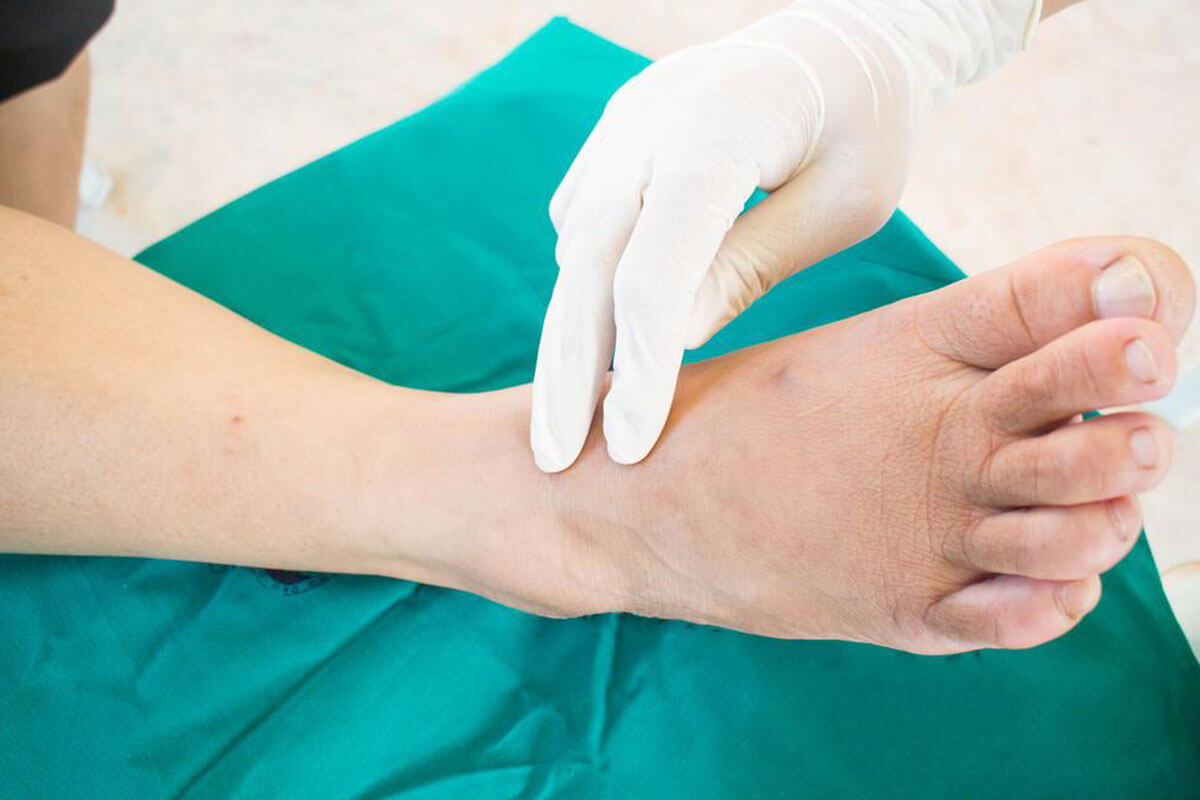How to Alleviate Your Diabetes Foot Problems
If you have diabetes, you may experience pain, numbness, and other issues in your feet. Here are some simple tips that can help in reducing diabetes foot problems.
People who have diabetes often experience certain foot problems. This happens because too much blood sugar in your body causes poor blood circulation and even nerve damage, resulting in diabetes foot problems like blisters, corns and calluses, bunions, hammertoes, ingrown toenails, and fungal infections. Though these diabetes foot problems may seem petty and you may wish to ignore them, leaving such issues untreated can lead to severe pain or infections. If you notice any such diabetes foot problems, do not delay seeking medical treatment.

- Check your feet daily
Spend a few minutes every day to check both your feet carefully, as you may have certain diabetes foot problems even if you don’t feel any pain. Examine your feet for any blisters, redness, infected toenails, or other similar problems. Remember to check between all your toes, and make a note of any new changes. If you find it difficult to check your feet on your own (for example, because of a physical challenge), ask a family member for help.
- Wash your feet with warm, not hot, water
Keeping your feet clean is important in preventing diabetes foot problems, so wash your feet every day for a brief period. It is vital that you use warm water, which is not hot, to wash your feet. Avoid soaking your feet for a long time, and dry them properly immediately after you are done washing them.
- Keep feet soft and dry
Often, diabetes foot problems may include dry and cracked skin owing to the high glucose levels. However, having cracked skin on your feet means that it is easier for bacteria to invade your skin and worsen infections. Take care to keep your feet soft and supple by using skin lotion daily. But ensure that your feet do not feel damp and sticky after the application; they should be kept soft but dry.
- Smooth corns and calluses, and fix other diabetes foot problems
Keeping your feet healthy entails taking care to ensure that your toenails are trimmed to the right length (to prevent ingrown nails), and corns and calluses are dealt with. Use a pumice stone after your bath to softly remove calluses or corns. However, do not rub vigorously and damage your skin. Seek help from a podiatrist to fix such diabetes foot problems.
- Choose shoes or slippers that fit well and wear them at all times
If you are battling diabetes foot problems, it is important that you always wear shoes or slippers to protect your feet and keep infections at bay. Remember to wear thick socks with your shoes as materials like leather can irritate your skin and cause sores and blisters. Investing in good, well-fitting shoes is important for people who have diabetes foot problems. When buying, check your shoes carefully for any sharp edges or rough seams that may hurt your feet. Break in any new shoes gradually.
- Opt for low-impact exercises
It is important to keep the blood flowing to your feet in order to minimize diabetes foot problems. Choose physical activities that have the minimal impact on your feet, such as walking, swimming, cycling, and yoga. If you are sitting for long periods, wiggle your toes for five minutes a few times a day. Always consult your doctor before starting an exercise program.
- Keep your blood sugar levels in control
Ultimately, the best way to prevent diabetes foot problems and nerve pain is to keep a close watch on your glucose levels. Maintaining a healthy lifestyle, quitting smoking, and sticking to your doctor’s advice can help in maintaining your blood sugar levels close to your desired target. This can reduce or prevent nerve problems caused by diabetes such as tingling, numbness, and a sensation of pain.
These foot care tips can go a long way in reducing your diabetes foot problems. Remember to follow up with your doctor regularly and report any new pain or diabetes symptoms promptly in order to receive early treatment for the problem.

